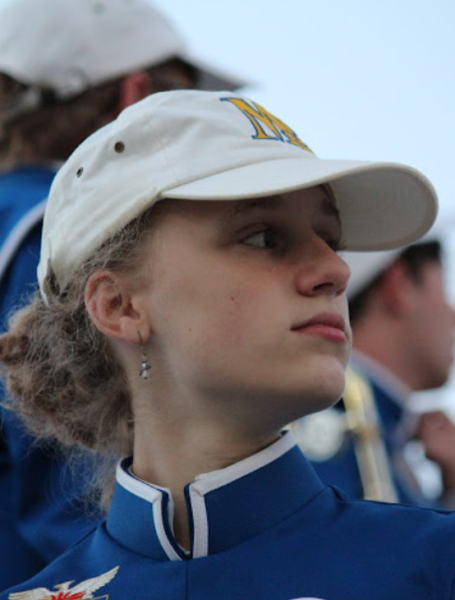Archangels in Scripture

Everybody can picture an angel: white, downy wings, golden ringlets of hair, usually singing a hymn with a horn and a halo. These are almost universal images, and they are especially popular during the holidays. However, most people don’t know that the visual appearance of an angel can actually vary widely across scripture.
Archangels differ from angels by their slightly higher status in the angelic ranks. They are one station higher than “regular” angels, but as far as specifics go, not much has been found that separates them from the regular angels. Canonically, the concept of seven archangels who “stand before God” has been mentioned multiple times. The most commonly accepted names for these seven are Raphael, Michael, Gabriel, Uriel, Selaphiel, Barachiel, and Jophiel. Each of these archangels have varying duties and responsibilities when it comes to the thing that concerns them most: the fate of humanity.
Raphael is mostly mentioned in the Book of Tobit. He has a wide variety of responsibilities as the patron of travelers, healers, matchmakers, the blind, and many more. In Tobit, Raphael accompanies Tobit’s son, Tobias, along a journey to receive ten silver talents. During this journey, Tobias meets Sarah. Raphael’s job is to bind a demon named Asmodeus, who has fallen in love with Sarah and kills any man engaged to her. In the end, Tobias and Sarah are married, which makes Raphael the patron of matchmakers.
Michael is known as the “warrior angel,” associated with the iconic image of him slaying the devil under his feet. Michael has many troops of angels under his command and has the power to smite any threat he comes across. He cast the fallen angels out of Heaven and is meant to throw down Satan in the final battle during the Day of Judgment. He also holds the scales to “weigh” souls and deliver them from Purgatory. Michael is also sometimes described as the guardian angel of Jesus himself.
The celebrated angel of the Annunciation, Gabriel, is the patron of all messengers. Besides his declaration to Mary, Gabriel appeared to the prophet Daniel in an attempt to explain his visions, let Zacharias know his wife Elizabeth was to bear John the Baptist, and was sent to destroy a sinful city called Sodom in the book of Genesis. Even in Islam, Gabriel appeared to Mohammad. He often travels in tandem with Michael and Raphael and is the most mentioned angel in scripture alongside them both.
Uriel, though not mentioned in the canon scriptures, plays a large role in the Book of Enoch, sent to tell Noah of the incoming flood. Patron of the arts and sciences, he is always available to assist with inspiration and studying. He has been called regent of the sun and constellations. Among these roles, he also holds the key to the Pit and resides over “thunder and terror,” as its described in 1 Enoch 20:2. He wields a flaming sword, and when Adam died, Uriel was among the angels who buried him in the garden of Eden.
Selaphiel, angel of prayer, is only mentioned once in the book of Revelation, 8:3-4: “Another angel, who had a golden censer, came and stood at the altar. He was given much incense to offer, with the prayers of all God’s people, on the golden altar in front of the throne. The smoke of the incense, together with the prayers of God’s people, went up before God from the angel’s hand.” Selaphiel can help if prayers feel stiff and cold. In the non-canon text “the Conflict of Adam and Eve,” he was sent along with Suriyel to keep Adam and Eve from Satan’s deception.
Barachiel is the angel of lightning and blessings. He is often depicted with a basket of bread or a multitude of roses. It is said that each petal represents a blessing from God, and Barachiel tosses them out as he pleases to bless people. Sometimes, he is mentioned as the chief of guardian angels, and he watches over parents with young children.
Jophiel, also known as Dina, is a rare example of an archangel who uses male as well as female pronouns. Jophiel is the patron of arts and artists, and taught seventy languages to humanity at the dawn of creation. He supposedly cast Adam and Eve out of Eden after their betrayal, and along with Uriel, is depicted with a fiery sword. She is also the angel of beauty.
These are just a few of the many archangels in scripture. There are many more, such as Phanuel (angel of repentance), Zadkiel (angel of freedom), Camael (angel of happy relationships), Raziel (angel of secrets), and Raguel (angel of judgment). There’s also Jegudiel (angel of hard work), Haniel (angel of joy), Cassiel (angel of tears), and Azrael (angel of death). Each of them has a special position in God’s plan for us, and they can demonstrate how, although each of us have different strengths and weaknesses, we all have qualities that can help us carry out God’s intentions. So, the next time you feel like you are struggling with daily life, call on any one of the angels to help you become the best version of yourself.

Emma Schramm began writing for the The Blue & Gold newspaper in her freshman year and has enjoyed it thoroughly ever since. She is also part of the Marist War Eagle Marching Band and theater production crew. In the meantime, Emma is probably drawing or feverishly negotiating with the publishing industry to get her novel published.


